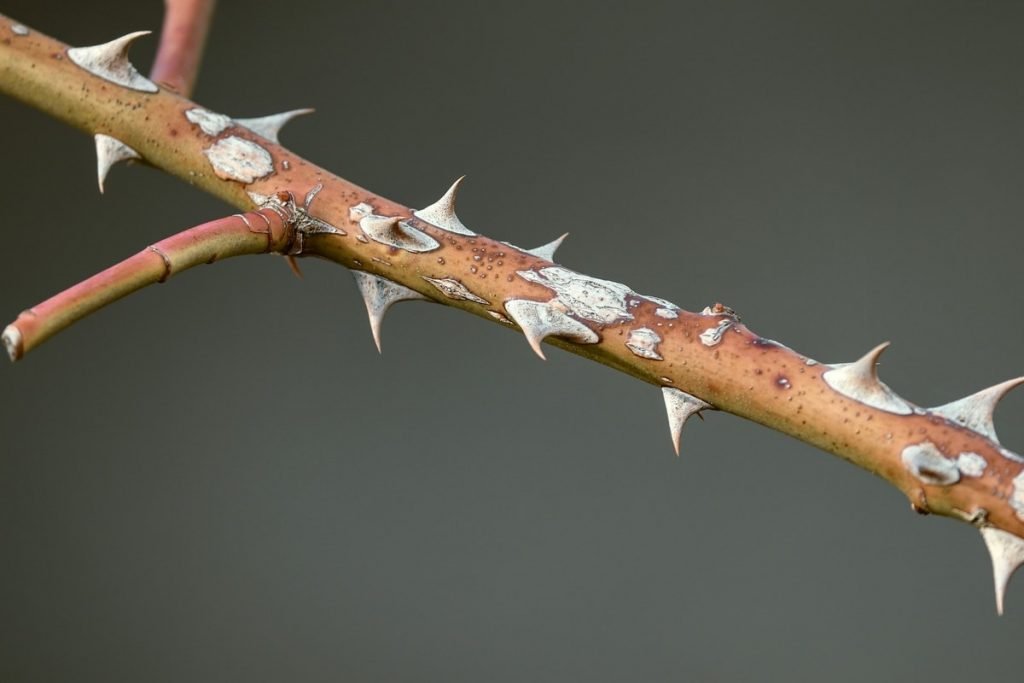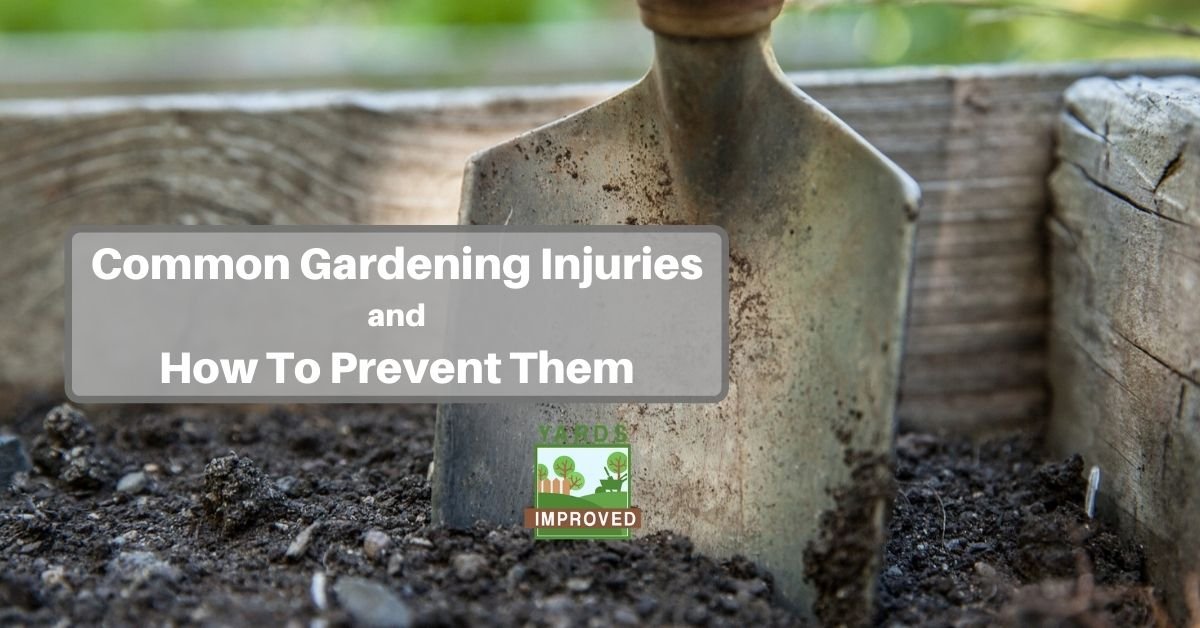For many, gardening is a wonderful and relaxing pastime. Others might find it a tiresome but necessary chore. But both groups are familiar with pain and injuries that can accompany this backyard task. Fortunately, with a little care, we can avoid most of the problems.
First, we’ll recap some of the common injuries you could face while gardening. From there, we’ll move on to some useful pointers that can help keep you safe
Common Injuries That Happen While Gardening
Gardening is rewarding, but it has its downsides, too. A lot of minor annoyances – and even some major aches and pains – can arise.
Muscle and joint pain
For most of us, the positions we put ourselves in while gardening aren’t part of our daily routine. There’s a lot of stooping, kneeling, crouching, and bending over. And when our bodies aren’t used to these actions, we can easily strain a muscle. And the result can be anywhere from a minor short-term annoyance to a major, and chronic, problem.
Blisters and Calluses
We might not be accustomed to using the tools that are part of taking care of our plants, either. And as we grip them, they can lead to blisters and calluses.
Sunburn
Of course, your gardening takes place under the sun – and that means you’re going to be at risk of sunburn! Even when you don’t feel the burn or have to deal with peeling skin, the sun’s rays can be damaging your skin. In the worst-case scenario, this damage can even lead to skin cancer.
Bug Bites
All kinds of insects and spiders will make their garden into their home. Many of them are welcome guests. Others are annoying pests. But among both friend and foe are those that can bite or sting.

Scrapes and Cuts
Scratches, scrapes, splinters, and cuts also come with the territory. Branches and thorns are among the culprits. But tools can also turn against you.
Ways to Prevent Injuries
Unfortunately, we can’t guarantee ways to prevent all injuries. But we’ve got some ideas for minimizing the risks!
Stretch (and Cool Down)
It’s only gardening, not track and field, right? But a little bit of stretching can go a long way to prevent all kinds of body aches later on.
Your legs, back, arms, and neck will all be grateful. Take it slow and easy, but be sure your body is prepped for the work you’re about to do.
When you’re done, repeat the stretching to help you cool down. This will help work out the tension that’s built up from the stress you’ve put on your body while taking care of all your tasks.
Wear The Proper Gear
You probably won’t be wearing your Sunday best to weed the flower bed, but that doesn’t mean you should wear just any work clothes, either. Gardening isn’t a contact sport, but you should still be sure to use the proper gear. That should include:
Take Off Rings
Wait, what? What could your rings have to do with gardening?
Ok, if you ARE wearing gloves as we suggested above, you might be able to skip this. However, if you’re working with your bare hands, your ring could get caught on something. And that could pull it against our skin, stretching or even tearing the skin.
Of course, your ring could always fall off, too – and you might never find it! So the best practice is to take your ring off and keep it in a safe place in the house.
Sunscreen
A quality sunscreen will lower the risk of getting sunburned. Even if you’re going to be outside for only a short time, you need it. Even if it’s overcast, you need it. Always wear sunscreen.
Insect Repellant
To keep at least some of the creepy crawlies and flying pests away, a good insect repellent is a necessity. Not every pest may respond, but most will. You’ll be grateful that you’re not getting eaten alive!
Use the Right Tools
Of course, using the right tools for the job makes the work go faster. It also makes it less likely that you’ll hurt yourself trying to “adapt” a tool for a foreign purpose.
It may take a moment to go back to the shed to get it, but having the proper equipment is worth it!
Use Sharpened Tools
Keeping those tools in good shape is another key to keeping you from hurting yourself. Trimmers, saws, and the like work more smoothly when kept sharp. That’s even true for shovels and spades!
When they’re kept clean and sharp, they’ll do the job easily. You won’t have to strain your hands and arms to make them work.
Store Tools Correctly
Yes, even storing your tools carefully can help keep you safe! If you’re not using a tool, put it back in your tool bucket or wheelbarrow. Even if you don’t have either of those, be sure to keep any tools you’re not using in a safe place out of your way.
It’s far too easy to trip over a tool carelessly left on the ground – or even puncture your shoe and foot with one!
Be Aware of Where Power Tools Are In Use
Lawnmowers are notorious for shooting out random twigs or pebbles. But leaf blowers and other tools can do the same. If someone else is working near you, make sure you know where they are – and that they know where you are. Help make sure that pets and children are out of the way, as well.
Lift with the Knees
We’ve heard it a million times before, but it always bears repeating. Use your knees, not your back, to do the lifting. That’s true even for small items! Be sure to use good lifting form, whether you’re picking up a tomato seedling or a bag of cement.
Move – but Move Carefully
It can be tempting to stay in one position while working. But be sure to move around as needed. Move your feet to get the best positioning. Stand up straight and stretch. Don’t try to reach too far.
Of course, don’t try to move too quickly or suddenly. But it’s equally important not to get “frozen” in one position, either.
We should mention, too, that you shouldn’t kneel and sit back on your legs. This can overstretch the muscles and ligaments of your knees. And that can lead to serious discomfort or graver knee trouble.
Take Breaks from the Chores
Even if you enjoy gardening, be sure to take frequent breaks. You need to be able to move around, stretch, and stand up straight. That’s not just for brief pauses to get into a better position, either.
Every 20 minutes or so, give yourself a breather, even if you don’t feel strained. This will relieve the strain on your muscles from being in unusual positions.
Stay Hydrated
Of course, it’s always important to stay hydrated. Even on a cool day, you’re losing water. Be sure to drink water or juice so that your body can stay healthy.
Avoid alcohol for the same reason (and because it can lead to bad decisions, especially when dealing with power tools and the like). Likewise, coffee and soda aren’t the best options since they lead to more loss of water.
Conclusion
Whether you love gardening or simply tolerate it, it’s important to take proper safety precautions. As innocent as the activity seems, it’s easy to pull muscles, get bitten by bugs, or otherwise be injured. Good safety practices aren’t complicated, so don’t forget to practice them!









